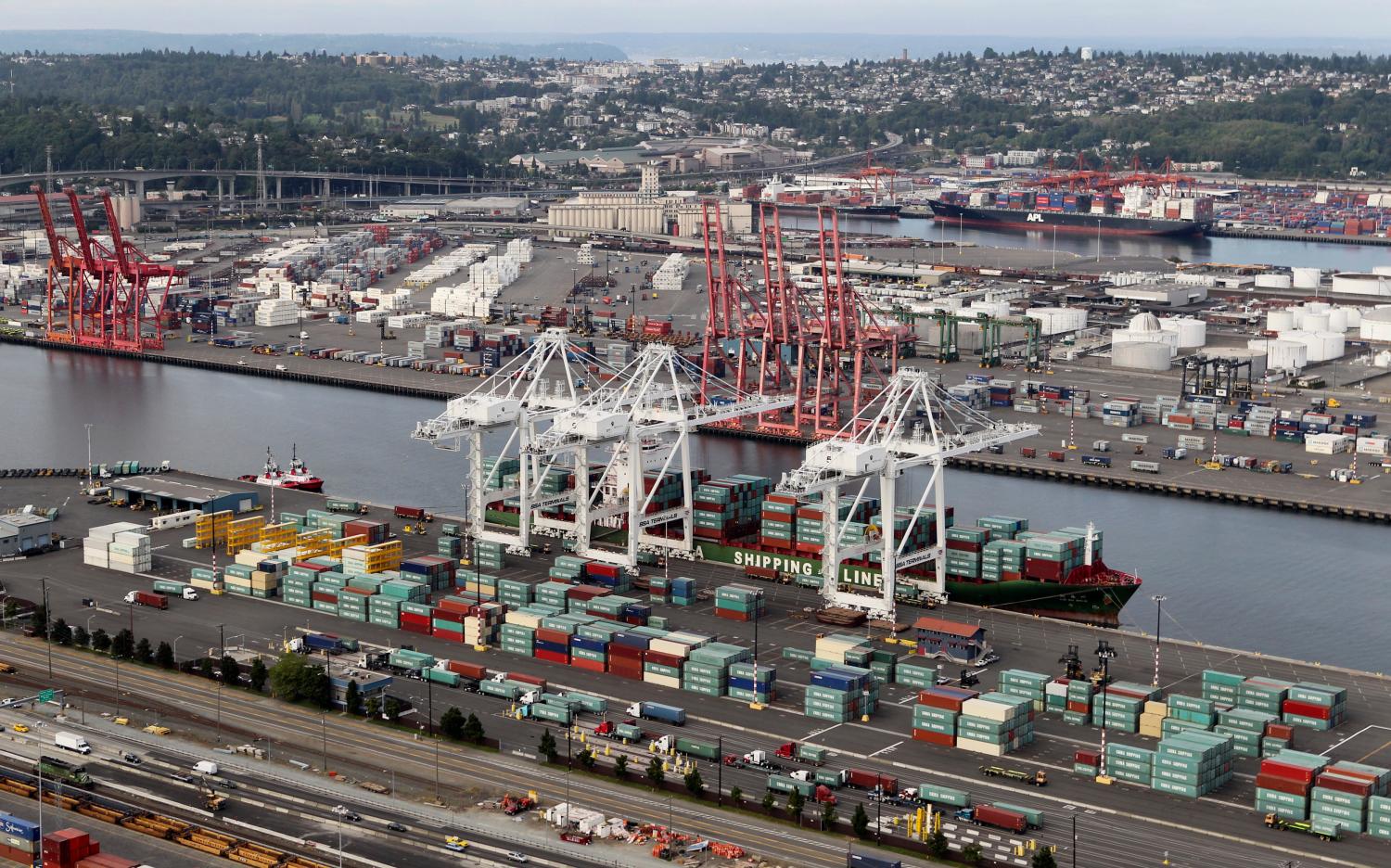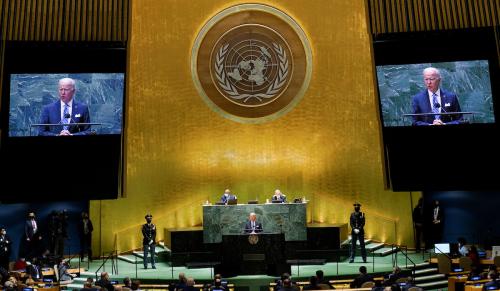In its initial fiscal cliff proposal to Republicans, the White House requested additional multi-year stimulus spending, most notably $50 billion in new infrastructure funds for FY 2013 and $25 billion a year for FYs 2014-2018. While rejected out of hand by Congressional Republicans, the potential economic benefits of infrastructure investment are considerable, according to William Galston and Korin Davis.
In this paper, Galston and Davis advocate the creation of a National Infrastructure Bank (NIB) and offer recommendations on its structure, mission and financial powers and responsibilities.
Galston and Davis note how badly American infrastructure has suffered over the past decades: The World Economic Forum’s 2011-2012 Global Competitiveness Report ranks the U.S.’s infrastructure at 16, down from its seventh place ranking just four years ago. And the U.S. has slipped in every category: roads, ports, railroads, and—most precipitously—in air transport and the quality of the electricity supply. Indeed, the reliability of the U.S. electric grid is now ranked 32nd, seven spots behind China.
Galston and Davis argue that government should use scarce public resources strategically to improve American infrastructure, specifically to perform functions for which the private sector lacks adequate incentives, to leverage private sector participation, and to close gaps between the rate of return the private sector requires and the revenues that private users of infrastructure are willing to provide.
In creating an efficient, effective NIB, Galston and Davis offer the following policy recommendations:
- Establish the bank as an independent government-owned corporation (GOC) outside of any governmental agency. This would endow the NIB with greater budgetary flexibility and not unnecessarily narrow the scope of infrastructure projects it could support.
- The bank’s leadership structure should feature a CEO and board of directors, some nominated by the president, others by the leaders of the two parties, confirmed by the Senate, serving staggered terms of about six years. Such a leadership model would give Congress some oversight authority but would sufficiently insulate its operations from political whims and create enough of a buffer so that elected officials would neither determine strategic chioces or project selection nor be called on the carpet for unpopular or controversial decisions.
- Create a division of the bank responsible both for analyzing the viability of proposed projects and for advising those seeking support. A strong and permanent professional staff would provide financial and technical advice to further improve resource allocation.
- The NIB should initially be financed with appropriations totaling $5 billion for each of the first five years. The goal would be that after the initial funding period the bank would be financially independent. Administrative costs could be covered by application and transaction fees.
- To achieve leverage, the new entity would have to attract private investor-depositors as well. Its authorizing legislation should be drafted to permit such offerings, subject to the bank’s meeting specific quantitative tests.
- Legislation setting up the NIB should establish some quantitative parameters for its lending activities. At the same time, the bank’s portfolio should be adequately diversified. No individual project should put at risk more than 10 percent of the bank’s lendable funds or encumber more than 5 percent of its capital.
- Do not limit the bank’s lending to specific categories of infrastructure, such as transportation. Instead, the bank should be free to invest in a wide array of infrastructure projects, including technology, environmental and energy projects, public utilities, or the renovation of schools and hospitals.
- Fundable projects must generate a stream of revenues through user fees. Each project’s private goods component (fundable through user fees) would have to be substantial relative to its subsidized public goods component.
- The NIB should not be empowered to offer loan guarantees, at least not at the outset.




